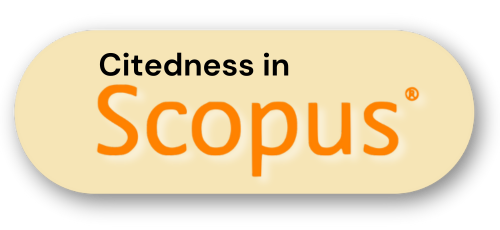Interpersonal Communication of Mc Donald's Employees In Improving Customer Satisfaction a t Mc Donald's Karang Satria
DOI:
https://doi.org/10.61194/ijcs.v1i1.16Keywords:
Interpersonal Communication, Customer Satisfaction, EmployeesAbstract
Along with the development of fast food business time is also growing and increasing which makes the fast food business competition in Indonesia is becoming increasingly stringent. With this intense competition makes a fast food business continues to offer its products with a variety of innovations, especially in communicating with customers.improve communication skills, provide the best service as well, and meet all the needs required by its customers. It becomes interesting to examine, whether customer satisfaction can be improved by an interpersonal communication conducted by a fast food employee to its customers. This study aims to determine the Interpersonal communication of Mc Donald's employees in improving customer satisfaction at Mc Donald's Karang Satria. This study uses interpersonal communication theory from Devito with dimensions of openness, empathy, support, positivity, similarity and also uses customer satisfaction theory from Indrasari with dimensions of Product Quality, Service Quality, emotional, price and cost. This study uses qualitative research methods with interview data collection techniques, observation, and documentation. The results of this study show that interpersonal communication of mc Donald's employees in improving customer satisfaction has been running well in all dimensions, but there are three dimensions that are still not done well, namely related to positivity, service quality and product quality. The conclusion of the study showed that interpersonal communication plays an important role in improving customer satisfaction.
References
Daryanto & Ismanto Setiabudi, M. (2014). Consumer and Excellent Service.Yogyakarta: Gava Media.
Indrasari, D. M. (2019). Marketing and Customer Satisfaction. Surabaya:Utomo Press (UP).
Muhammad Budyatna, M. (2015). Theory of Interpersonal Communication. Jakarta:Prenadamedia Group.
Nur Maghfirah Aesthetika, (2018). Textbook of Interpersonal Communication.Sidoarjo.
Rakhmawati, Y. (2019). Interpersonal Communication Concepts and Empirical Studies. Surabaya: CV. Putra Media Nusantara.
Riinawati, M. (2019). Introduction to Communication and Organization Management Theory. Yogyakarta: PT Pusaka Baru Press.
Rosnaini Daga, (2017). Image, Product Quality, and Customer Satisfaction.Makassar: Global RCI.
Samsinar (2017). Human Communication: Intrapersonal, Interpersonal, Group and Organizational Communication. Watampone: Gialorossi.
Sarmiati, E. R. (2019). Interpersonal Communication. Unfortunate: CV. IRDH.
Sugiyono. (2014). Quantitative, qualitative and R &; D Research Methods: Alfabeta.
Tersiana, A. (2018). Research Methods. Yogyakarta: Start Up.
Adriano, F. F. (2021). The Effect Of Service Quality On The Level Of Customer Satisfaction Of Eco Racing Users At PT. BANDUNG ECO SINERGI TEKNOLOGI (BEST). Vol.8, No.6, 8682-8689. Retrieved October 3, 2022, at 13.46 WIB
CHENG, L. Y. (2020). The Impact Of Service Quality On Customer Satisfaction In Four- Or Five-Stars Hotel In Klang Valley. Vol 5, Issue, 81-109. Retrieved October 3, 2022, at 14.01 WIB
Kholis1, A. N. (2019). Perancangan Buku Panduan Seduh Kopi Manual Untuk Home Brewers Guideline Book Design For Manual Coffee Home Brewing. Vol.6, No.3, 3607-3615. Retrieved October 3, 2022, at 14:54 WIB
Pambayun, M. R. (2019, August 2). The effect of barista interpersonal communication on customer satisfaction. Vol.6, No.2 August 2019, 6, 5135-5141. Retrieved October 3, 2022, at 14:58 WIB
Tua, R. M. (2020). The role of interpersonal communication of leaders in increasing the work motivation of members of the Soewondo Medan Air Force Base. Volume 4, Numbers 1, 9 - 17. Retrieved October 3, 2022, at 16:36 WIB
Yamona, M. A. (2018). Interpersonal Communication of Frontliner Employees in Increasing Customer Satisfaction PT. J.CO DONUTS &; COFFEE Giant Alaya Samarinda Branch. Volume 6, Number 4, 206-216. Retrieved October 3, 2022, at 17.01 WIB
Tawakal, I. (2021, September 11). In the Aftermath of the Viral Video 'Order Espresso but Talk Expresso', Sekara House Barista Apologizes.
Akerlof, K. L., Timm, K. M. F., Rowan, K. E., Olds, J. L., & Hathaway, J. (2022). The Growth and Disciplinary Convergence of Environmental Communication: A Bibliometric Analysis of the Field (1970–2019). Frontiers in Environmental Science, 9. https://doi.org/10.3389/fenvs.2021.814599
Bo, S., Deng, L., Sun, Y., & Wang, B. (2021). Intergovernmental communication under decentralization. Journal of Economic Behavior and Organization, 184, 606–652. https://doi.org/10.1016/j.jebo.2021.02.007
de las Heras-Pedrosa, C., Jambrino-Maldonado, C., Rando-Cueto, D., & Iglesias-Sánchez, P. P. (2022). COVID-19 Study on Scientific Articles in Health Communication: A Science Mapping Analysis in Web of Science. International Journal of Environmental Research and Public Health, 19(3). https://doi.org/10.3390/ijerph19031705
DePaula, N., Dincelli, E., & Harrison, T. M. (2018). Toward a typology of government social media communication: Democratic goals, symbolic acts and self-presentation. Government Information Quarterly, 35(1), 98–108. https://doi.org/10.1016/j.giq.2017.10.003
Kim, Y. Y. (2012). Mapping the Domain of Intercultural Communication: An Overview. Communication Year Book, 24(Taylor).
Lemon, L. L., & VanDyke, M. S. (2021). Expanding the discussion on internal management of risk communication: A critique of the current risk communication literature. Public Relations Inquiry, 10(3), 377–394. https://doi.org/10.1177/2046147X211014086
Li, R., Rahaman, M. M., Tang, Z., & Zhao, L. (2021). Assessing Social Media Communications of Local Governments in Fast-Growing U.S. Cities. Professional Geographer, 73(4), 702–712. https://doi.org/10.1080/00330124.2021.1933547
Martin, & Nakayama. (2017). Experiencing Intercultural Communication – An introduction. McGraw Hill Company.
Reader, T. W. (2022). Stakeholder safety communication: patient and family reports on safety risks in hospitals. Journal of Risk Research, 25(7), 807–824. https://doi.org/10.1080/13669877.2022.2061036
Sáez Martín, A., Haro de Rosario, A., & Caba Pérez, M. D. C. (2015). Using Twitter for Dialogic Communication: Local Government Strategies in the European Union. Local Government Studies, 41(3), 421–444. https://doi.org/10.1080/03003930.2014.991866
Sapienza, Z., Iyer, N., & Veenstra, A. (n.d.). Reading Lasswell’s Model of Communication Backward: Three Scholarly Misconceptions. Mass Communication & Society, 18, 599–622. https://doi.org/10.1080/15205436.2015.1063666
Seyranian, V., Lombardi, D., Sinatra, G. M., & Crano, W. D. (2022). Optimizing climate change communication: Context Comparison Model method. Frontiers in Psychology, 13. https://doi.org/10.3389/fpsyg.2022.897460
Wang, X., Wong, Y. D., Li, K. X., & Yuen, K. F. (2021). Shipping industry’s sustainability communications to public in social media: A longitudinal analysis. Transport Policy, 110, 123–134. https://doi.org/10.1016/j.tranpol.2021.05.031
Downloads
Published
Issue
Section
License
Copyright (c) 2023 Akmal Nur Iksan, Feri Sanjaya

This work is licensed under a Creative Commons Attribution 4.0 International License.





